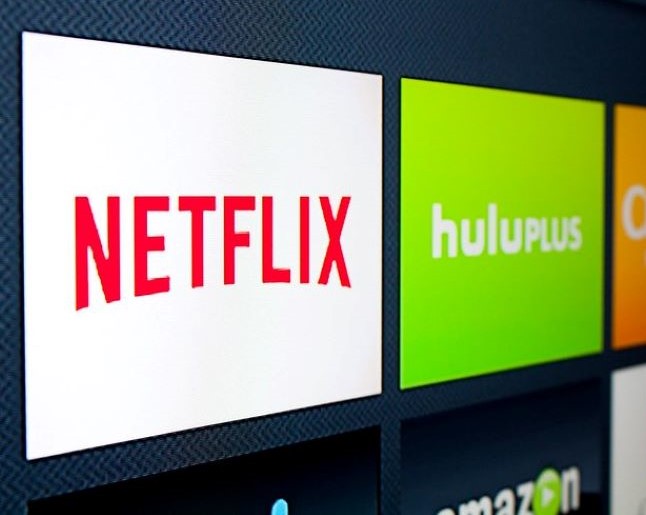Blockbuster. Its purpose was to provide on-demand videos to consumers in a brick-and-mortar store for a rental fee. At the time, it dominated the video rental business, and its stores were in almost every town across America. In fact, Blockbuster sold to Viacom in 1994 for $8.4 billion, opening 6,000 stores globally in five years.
In 1998, Netflix was founded. It was the swift beginning of the end for Blockbuster. What caused Netflix to knock down one of the largest video distribution companies in the world in such a short amount of time?
In “Netflix: reinvention across multiple time periods, reflections and directions for future research,” Ajay Kohli, Gary T. and Elizabeth R. Jones Chair in Management and regents professor of marketing at the Georgia Tech Scheller College of Business, and Joel Mier, lead author and lecturer of marketing at the University of Richmond Robins School of Business, take the reader inside the inner workings of Netflix. They drill down into what made it such a successful start-up and how its internal operations drive its external success.
Most start-ups face a critical juncture – whether to focus on their existing businesses or to look for future business opportunities. The former allows a small company to expand its customer base and grow profits, while the latter pulls resources away from its current business in search of new business opportunities (most of which tend to fail).
By reviewing interviews with three key leaders at Netflix - Marc Randolph, co-founder and founding CEO; Neil Hunt, who helped develop the company’s streaming service; and Patty McCord, who was the company’s chief talent officer – Kohli and Mier found three themes that emerged.
Ambidexterity: Structural Versus Contextual
Company ambidexterity means a start-up or an established company executes on two very different aspects of business – generating profits from current business (exploitation) and investing to develop future business (exploration). In a structural approach to ambidexterity, two separate divisions are created within the company. One focuses on generating profits from current business and the other focuses on investing in the development of future business. The two divisions are kept largely separate in order to enable them to focus on their respective tasks that call for different mind-sets and different work processes. This approach to ambidexterity however has the drawback of the division tasked with developing future business having limited resources, limited access to customers and markets, limited technological knowledge, and so on.
In contrast to structural ambidexterity, a contextual approach to ambidexterity involves the same division executing on both aspects -- generating profits from the current business and investing in the development of future businesses. Netflix has largely followed the contextual approach. It initially focused on DVD sales and rentals through the mail. It then moved to DVD rentals only, followed by DVD subscriptions, and then episodic content on DVDs.
Around this time the Internet was beginning to influence customers, and Netflix actively started exploring utilizing the platform. Internal teams continued to work on the DVD business while simultaneously investing resources to capitalize on new opportunities to stream content (movies) initially on PCs and then on multiple platforms like smart phones, tablets, gaming platforms, wi-fi enabled TVs, and more. It then invested in developing its own original content, followed by localized original content, all very successfully. How did Netflix avoid the pitfalls of contextual ambidexterity? “The contextual approach has helped Netflix grow for over 23 years. It is likely that it has worked well for Netflix because it complements the approach with an unwavering focus on creating great experiences for customers regardless of whether it is exploiting or exploring, hiring and retaining only exceptionally talented employees, and fostering an amazingly transparent and honest culture,” said Kohli.
Scaling Up
One thing all start-ups face is the need to scale. Many companies tend to stay in the exploitation phase, concentrating their energy and resources into scaling products that have already been created. Netflix, on the other hand, focused on exploitation and exploration—looking toward how they could grow by developing new products/businesses, which in turn would gain them new customers.
Netflix saw the opportunity for a new delivery platform (Internet) and successfully pursued the new technology while continuing to offer DVDs by mail. It accomplished this, in large part because of its corporate philosophy of giving employees the freedom to make decisions and a simple guiding principle – that they act in the best interests of the company. As Kohli relates, participation in the creative process is not just in the hands of a select few leaders. During all their iterations, Netflix hired and retained “fully functioning adults” (as some refer to its employees), who came ready to contribute. Those who underperformed didn’t last long (and still don’t).
The company also has a strong culture of risk-taking and honors mistakes as the cost of success. For example, it switched from offering DVDs only to offering streaming content. Next, it took a risk with producing its first show, “House of Cards.” It was a radical move on Netflix's part to go from streaming content created by HBO and Network TV to developing its own content. "Content creation requires completely different skills than renting DVDs and streaming videos. Despite this, Netflix went into it in a very big way, spending billions more than its competitors each year,” said Kohli. Importantly, its new ventures weren’t always successful. For example, its first expansion into the United Kingdom in 2004 was cancelled shortly before the planned launch after over a year in development and market testing. Events such as these were treated as the cost of learning and downstream success. Across all ventures, two things were common; the work-related passion of its employees (currently at 9,000) and the company’s entrepreneurial DNA, fiercely guarded against potential degradation from size, according to Kohli.
Customer Centricity
A successful start-up, particularly one that has obstacles to overcome such as introducing an entirely new business model regularly seeks market feedback. Consumers accepted the Blockbuster model of renting movies from a store, accepting due dates, and paying late fees. One of Blockbuster’s failures was not seeking customer input along the way. Netflix knew it needed regular input from customers gathered through qualitative and quantitative methods. It prioritized customers over everything else, seeking a deep and meaningful relationships with customers of today and tomorrow.
While most companies seek customer input, many never fully apply what they learn from customer feedback. If a customer is seeking a new experience, or looking for a new product, for instance, an organization may be reluctant to venture out of its existing product offerings due to a fear of risking too much. This prevents a company from expanding. Netflix, however, believes risks result in greater rewards if they apply what they learn from their customers. Netflix reaches its goals by continuously monitoring what their customers want from it. What makes Netflix breathtaking,” said Kohli, “is the boldness and the immense success with which it has invested in radically different businesses. In part, this may be attributed to its single-minded focus on innovating in the value chain for delivering great content-related consumer experiences.”
In the streaming service business, Netflix still reigns supreme. Its continued success is not only because of its current product offerings, including original content creation and acquisition but also in its determination to look for future expansions. By retaining its start-up values, empowering its employees to act on behalf of the company’s best interest, and focusing unwaveringly on customers, Netflix remains as successful today as it was in the days of the DVD player.

